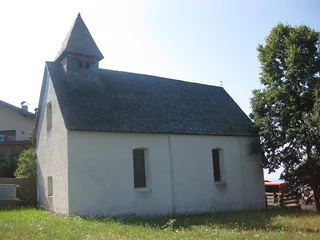
1/3
Church St. Valentin at Schlaneid
Salonetto/Schlaneid, Mölten/Meltina, Bolzano/Bozen and environs

1/3
Salonetto/Schlaneid, Mölten/Meltina, Bolzano/Bozen and environs

1/2
Sesto/Sexten, Sexten/Sesto, Dolomites Region 3 Zinnen

1/4
Monguelfo/Welsberg, Welsberg-Taisten/Monguelfo-Tesido

Sarentino/Sarnthein, Sarntal/Sarentino, Bolzano/Bozen and environs

S. Osvaldo/St. Oswald - Bolzano/Bozen, Bolzano/Bozen, Bolzano/Bozen and environs

Resia/Reschen, Rodeneck/Rodengo, Vinschgau/Val Venosta

Sesto/Sexten, Sexten/Sesto, Dolomites Region 3 Zinnen

1/8
Parcines/Partschins, Partschins/Parcines, Meran/Merano and environs

Pavicolo/Pawigl, Lana, Meran/Merano and environs

1/7
Caminata di Tures/Kematen, Sand in Taufers/Campo Tures, Ahrntal/Valle Aurina

Tiso/Teis, Villnöss/Funes, Dolomites Region Villnösstal

1/3
Vipiteno/Sterzing, Sterzing/Vipiteno, Sterzing/Vipiteno and environs

1/7
Pescosta/Pescosta, Corvara, Dolomites Region Val Gardena

Ora/Auer, Auer/Ora, Alto Adige Wine Road

1/2
Settequerce/Siebeneich, Terlan/Terlano, Alto Adige Wine Road

Merano/Meran, Meran/Merano, Dolomites Region Val Gardena

1/3
Tirolo/Tirol, Tirol/Tirolo, Meran/Merano and environs

1/2
Salorno/Salurn, Alto Adige Wine Road

1/2
Predonico/Perdonig, Eppan an der Weinstaße/Appiano sulla Strada del Vino, Alto Adige Wine Road

Spinga/Spinges, Mühlbach/Rio di Pusteria, Brixen/Bressanone and environs

1/2
Dobbiaco Nuova/Neutoblach, Toblach/Dobbiaco, Dolomites Region 3 Zinnen

Roncadizza/Runggaditsch - Ortisei/St.Ulrich, Urtijëi/Ortisei, Dolomites Region Val Gardena

Alliz/Allitz, Laas/Lasa, Vinschgau/Val Venosta

Ponte Gardena/Waidbruck, Barbian/Barbiano, Brixen/Bressanone and environs

1/3
Fiè/Völs, Völs am Schlern/Fiè allo Sciliar, Dolomites Region Seiser Alm

1/3
Giovignano/Tschiffnon, Feldthurns/Velturno, Brixen/Bressanone and environs

S. Antonio-Pozzo/St. Anton-Pfuss, Kaltern an der Weinstraße/Caldaro sulla Strada del Vino, Alto Adige Wine Road

Lasa/Laas, Laas/Lasa, Vinschgau/Val Venosta

Eschio/Aschl, Vöran/Verano, Meran/Merano and environs

Merano/Meran, Meran/Merano, Meran/Merano and environs